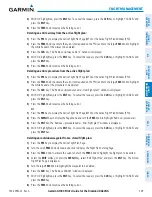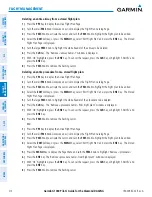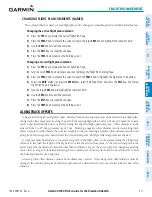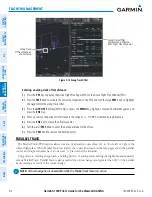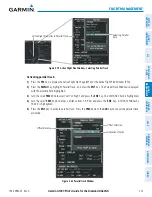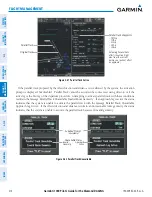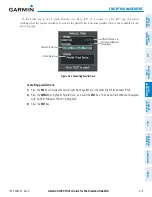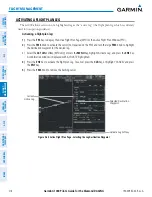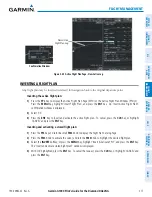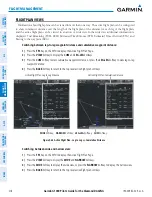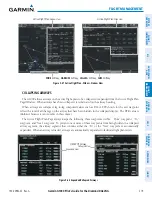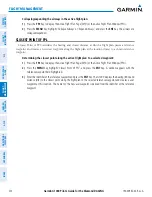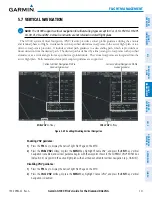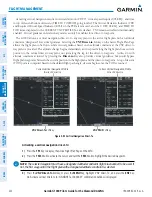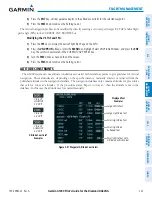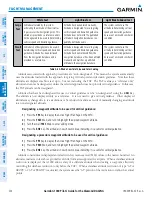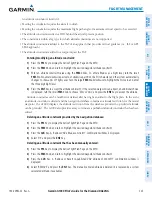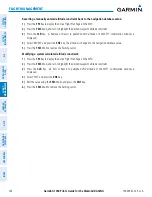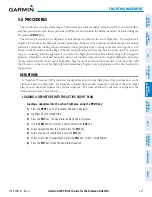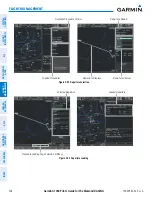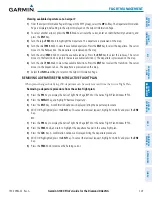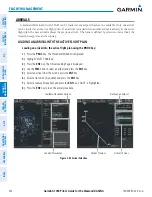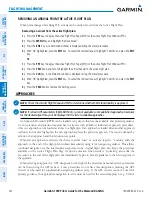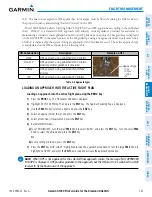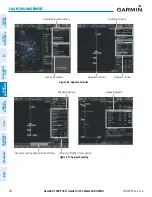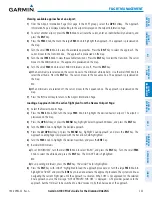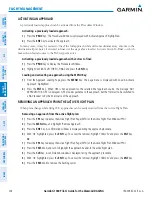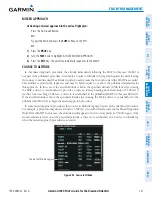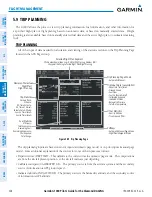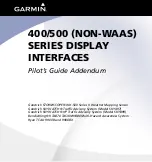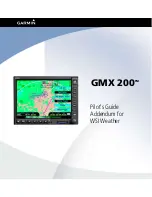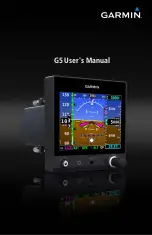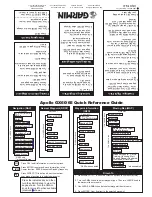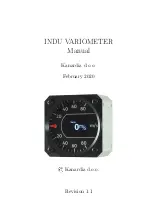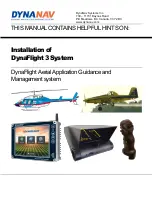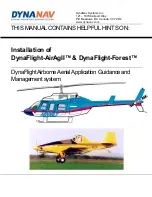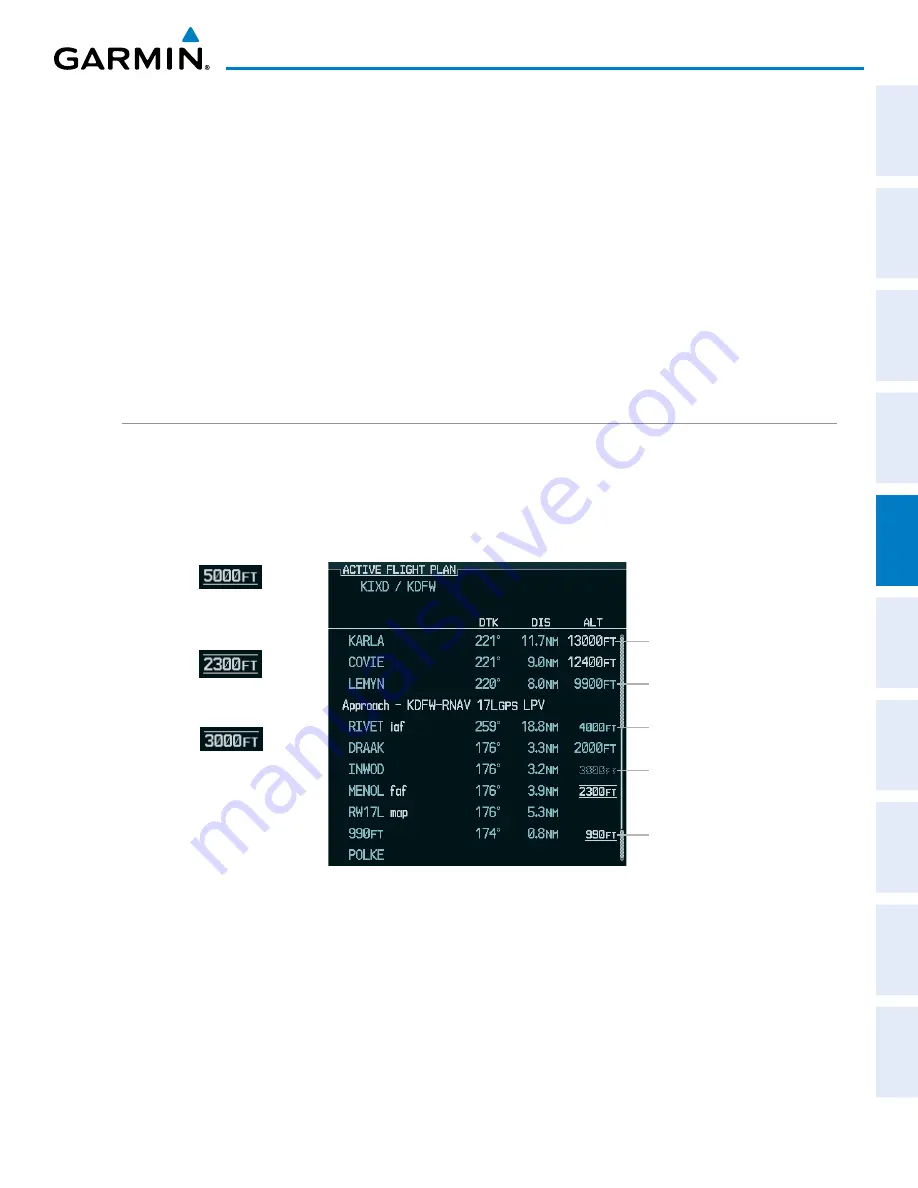
190-00962-02 Rev. A
Garmin G1000 Pilot’s Guide for the Diamond DA42NG
223
FLIGHT MANAGEMENT
SY
STEM
O
VER
VIEW
FLIGHT
INSTRUMENTS
EIS
AUDIO P
ANEL
& CNS
FLIGHT
MANA
GEMENT
HAZARD
AV
OID
ANCE
AFCS
ADDITIONAL
FEA
TURES
APPENDICES
INDEX
4)
Press the
ENT
Key. Vertical guidance begins to the altitude constraint for the selected waypoint.
5)
Press the
FMS
Knob to remove the flashing cursor.
The vertical navigation profile can be modified by directly entering a vertical speed target (VS TGT) and/or flight
path angle (FPA) in the CURRENT VNV PROFILE box.
Modifying the VS TGT and FPA:
1)
Press the
FPL
Key to display the Active Flight Plan Page on the MFD.
2)
Press the
VNV PROF
Softkey; or press the
MENU
Key, highlight ‘Select VNV Profile Window’, and press the
ENT
Key. The cursor is now located in the CURRENT VNV PROFILE box.
3)
Turn the
FMS
Knobs as needed to edit the values.
4)
Press the
FMS
Knob to remove the flashing cursor.
ALTITUDE CONSTRAINTS
The G1000 system can use altitude constraints associated with lateral waypoints to give guidance for vertical
navigation. These altitudes are, depending on the specific instance, manually entered or retrieved from the
published altitudes in the navigation database. The navigation database only contains altitudes for procedures
that call for “Cross at” altitudes. If the procedure states “Expect to cross at,” then the altitude is not in the
database. In this case the altitude may be entered manually.
Large Light Blue Text
Small White Text with
Altitude Restriction Bar
Large White Text
Small Light Blue
Subdued Text
Small Light Blue Text
Figure 5-91 Waypoint Altitude Constraints
Cross AT
or ABOVE
5,000 ft
Cross AT
or BELOW
3,000 ft
Cross AT
2,300 ft
Altitude Constraint
Examples
Displayed Text
Examples

